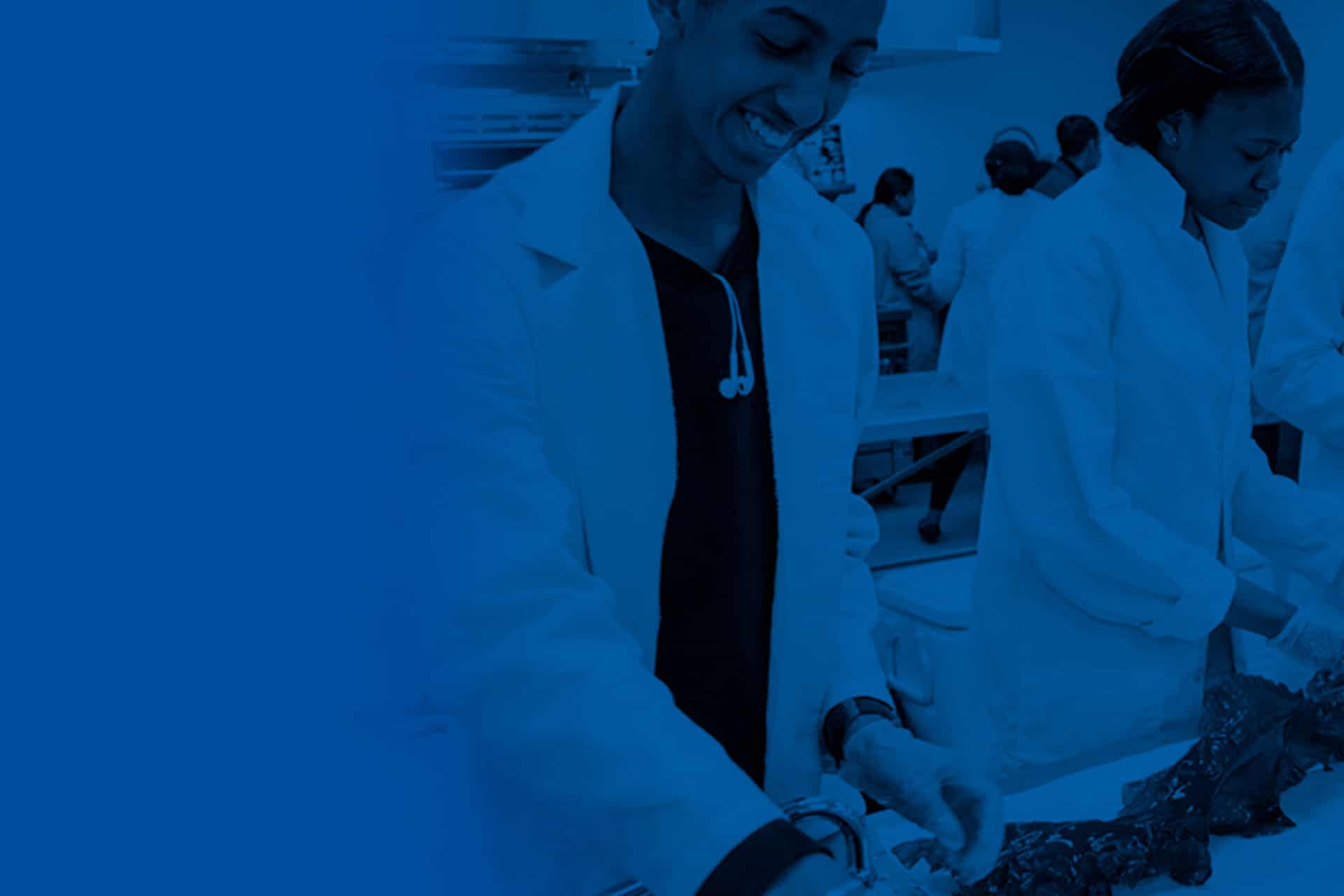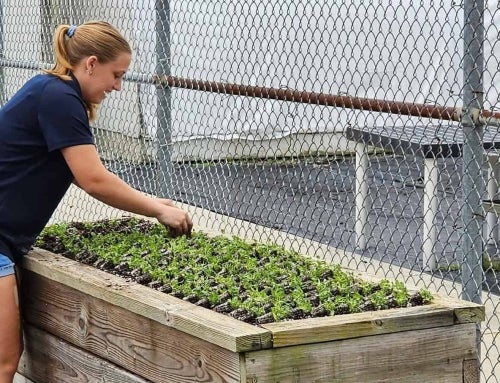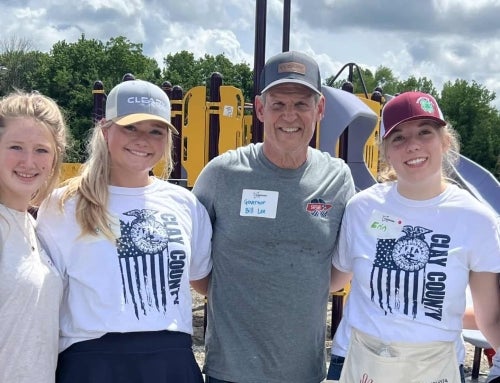Large tanks bubble as koi do slow, meandering laps. Aquariums gurgle while lobsters peer through the glass. Vats of seaweed prepare to be processed. Elsewhere, fiberglass bends over a wooden frame and a boat hull starts to take shape. Cabinets are filled with beakers for tomorrow’s experiments. Several research vessels sit at a dock outside, ready for their next venture to the Long Island Sound.
For a high school student interested in aquaculture – that is, the farming of aquatic organisms such as fish, mollusks, crustaceans and aquatic plants – this setting might sound like a dream. After all, the facility houses an aquaculture lab, a computer-assisted design lab, a boat construction lab, a ship bridge simulator and more. It appears to be a lair used by professional scientists, but these tools and others are available to scientists in training – students of the Bridgeport Regional Aquaculture Center, or Aqua, for short, in Bridgeport, Conn.
Specialized Science
At Aqua, students from school systems in the region can enhance the traditional high school curriculum with unique aquaculture classes. Students here get the opportunity to study marine ecology, seafood science, biology, chemistry, physics, marine design, coastal navigation/piloting and more. It’s a combination of world-class facilities, diverse coursework and great teachers that cause many students and families to make every effort to participate.
“Students come from seven school districts for two-hour blocks,” says Liz Kranyik, the ag biology and seafood science teacher, and FFA advisor, at Aqua. “Most students really want to be here. They want experiences they won’t get elsewhere, so our emphasis is to try to get them to use all of our facilities in some way.”
Students share the same impression.
“I initially went to a different school for science classes, but I transferred there based on the school’s reputation,” says Casey O’Connor, an Aqua graduate and former Bridgeport Aquaculture FFA chapter president who now studies biochemistry at New York University. “The environment was fast-paced and hands-on. The chemistry labs have instruments often only offered in college.”
“One of my classes went out on the boat once a week to do hands-on lab work on the water,” adds Cassidy Fawcett, who graduated from Aqua last May and also served as a Bridgeport Aquaculture FFA chapter president. She’s now studying political science and biology at Salve Regina University in Newport, R.I.
One of the school’s most unique opportunities is a seafood science course that uses the school’s 56-foot research vessel, the Catherine Moore, to harvest algae. Teachers and students take the boat to the school’s seaweed farm on Long Island Sound and pull long ribbons of kelp onboard. The product is then noodled, blanched, vacuum sealed and sold along with other seafood at the school’s seafood market, Angie’s at Aqua, which is open to the public each week. “We are the only high school that processes algae for public sale,” Kranyik says. The sugar kelp sells for $3.95/pound.
The educational value of the harvest and market spans science and community engagement.
“We aim for a student-run market, so the students have a lot of input in what we have here,” she says. “They are responsible for helping decide what we sell, and then pricing it. Students in other classes are responsible for working with the fishes to bring them to market size.”
Fans of FFA
What’s more, 217 of the school’s 410 students are currently members of the Bridgeport Aquaculture FFA.
“I think membership is so high because the school offers so many opportunities,” says Kyle Rosenfeld, an Aqua graduate and current student at the University of San Francisco. Rosenfeld was a Bridgeport Aquaculture FFA member through high school and served as the chapter reporter and secretary. “We won our state agriscience fair one year, then went on to place fourth nationally. Our project looked at the effects of eutrophication (excessive richness of nutrients in a body of water, frequently due to runoff from the land) on Long Island Sound.”
FFA allows students to explore career interests and the programs offered at Aqua enhance that, Kranyik says. “In our seafood science class, we talk a lot about the allied industries that may never touch the food, but they are the support staff. They provide the plastic and paper goods that the industry relies on, so the students are really open to different types of careers.”
“The students also grow personally here, and it’s a way to bolster their self-confidence,” she adds. “They are responsible for dressing the fish however the customer wants. They apply all of the skills they’ve learned in our programs and they put their best faces forward with the customers. If they can interact with the community here, then they can go talk to other people and take what they’ve learned to their first job. Their education here becomes a real stepping stone for them.”
Cool Aquaculture Schools
Aquaculture is one of the fastest growing food-producing sectors, according to the Food and Agriculture Organization of the United Nations. As the demand for farmed fish continues to grow, so does the demand for experts to work in aquaculture.
These five schools offer programs in aquaculture to prepare students for careers in the field:
- The Sound School: Curriculum at the New Haven, Conn., high school includes credits in aquaculture. Vocational classes are taught in a maritime environment to prepare students for careers in aquaculture.
- Ocean Springs High School: In addition to classroom lessons, students get hands-on experience maintaining tanks of fish and crabs. It’s the only high school aquaculture program in the state of Miss.
- San Lorenzo Valley High School: Students raise tilapia in the hands-on program. The Fenton, Calif., school has a focus on aquaponics, connecting fish tanks to beds of herbs and vegetables, using fish waste as fertilizer.
- Auburn University: The School of Fisheries Aquaculture and Aquatic Sciences offers undergraduate programs in fisheries science. Classes include fish hatchery management, commercial aquaculture and fish population assessment.
- University of Rhode Island: One of the oldest aquaculture programs in the Northeast, the school offers undergraduate and graduate programs, including a B.S. in aquaculture and fisheries technology.
– By Jodi Helmer
Give it a Try!
There are many opportunities for students and teachers to engage with aquaculture. Here are three ways to incorporate it into your life:
- Buy farmed fish: Shop the seafood aisle in the supermarket and look for farmed tilapia, oysters, shrimp and other seafood. Choose foods with the Aquaculture Stewardship Council label. The designation is given to fish farms that meet standards for responsible aquaculture.
- Set up a mini system: Desktop aquaculture setups that combine a fish tank and herb garden are great for the classroom. The closed-loop system offers a lesson in how the fish waste fertilizes the plants and the plants clean the water.
- Schedule a tour: Many aquaculture facilities welcome group tours. A field trip will introduce FFA members to commercial-scale aquaculture and provide insight into getting a fish from an egg to the table.
Check out more ideas on how to incorporate aquaculture at home and in the classroom.
– By Jodi Helmer












